A Day Trip to Nara from Kyoto or Osaka: Meet the Sacred Deer of Nara Park
Read on for why Nara is the best day trip destination for anyone headed to Kyoto or Osaka.
You have no idea the restraint it took to not make a deer-related pun in the title of this article! “Oh deer” and “deerie me” definitely nearly made the cut, but I managed to stop myself. Nara in Japan is famous for its population of wild deer that roam freely around its sprawling park – the deer are thought to be messengers of Shinto gods and over the years have been “taught” to politely bow for food from humans.
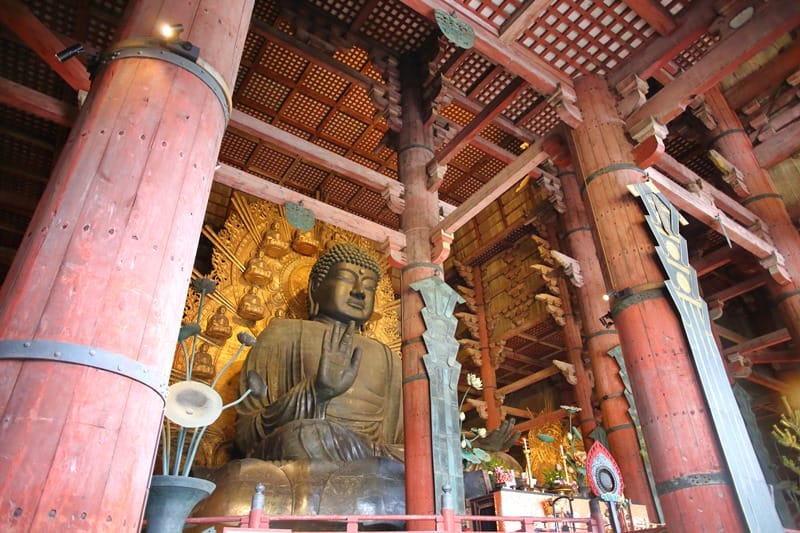
But that’s not all – Nara is also home to beautiful shrines and temples that have stood the test of time, and are wonderful additions to your Nara day trip itinerary.
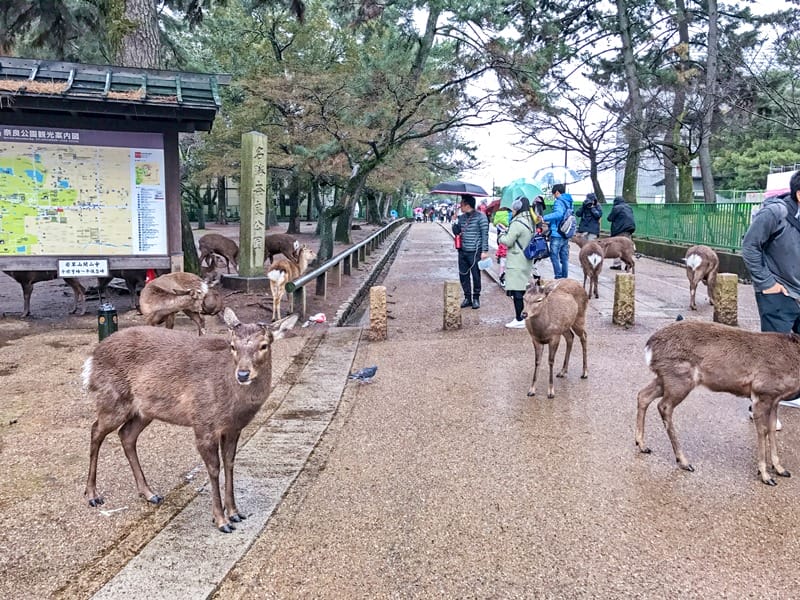
Plannin a day trip to Nara from Osaka or Kyoto? Read on for how to get to Nara, what to see in 1 day and how to interact responsibly with the sacred deer of Nara Park!
How to get from Osaka to Nara
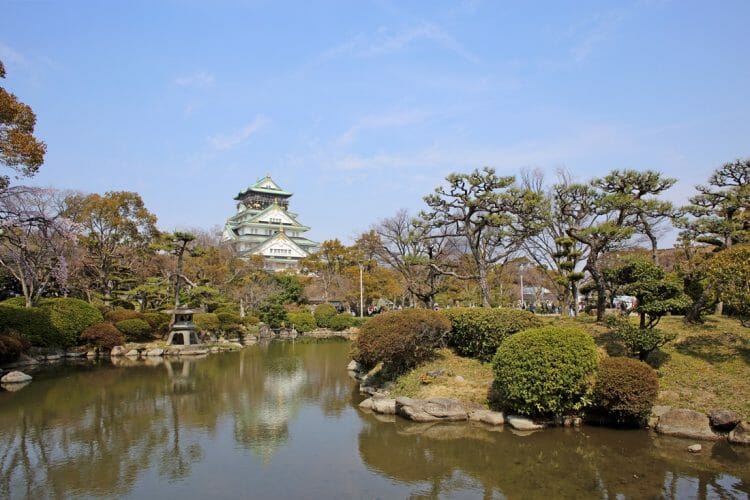
It takes less than an hour to travel from Osaka to Nara park by train, and there are multiple trains to choose from every day. The best way to get there is via the Kintetsu Railway (not covered by your JR Pass) – depending on which station you hop on from in Osaka, you can choose from the limited express, rapid express, express, semi-express, suburban semi-express or local. Click here for the Kintetsu network map.
If you want to take the JR line from Osaka to Nara, head to Osaka Station and hop on the Yamatoji Line towards Nara. Click here to check train schedules – set “Osaka” as the departure station, and “Nara” as the arrival station. It will take approximately 50 minutes to get to Nara.
The Kintetsu-Nara station is slightly closer to Nara Park than the JR Nara Station and it will take you around 10-20 minutes to walk to Nara Park.
Related article: Click here to read my 1 day guide to Osaka!
How to get from Kyoto to Nara
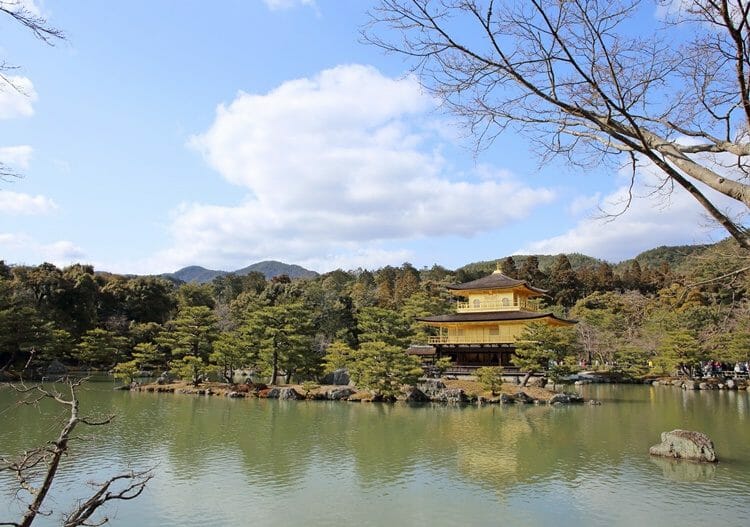
Nara is equally easy to get to from Kyoto. You can take the Kintetsu Railway from Kyoto Station (again, not covered by your JR Pass), click here for train timings. The journey to Nara from Kyoto will take between 35-50 minutes depending on whether you hop on the limited express or rapid express train.
If you want to take the JR line, head to Kyoto Station and hop on the Miyakoji Rapid Service which will take you approximately 45 minutes to travel from Kyoto to Nara by train. Click here to check train schedules – set “Kyoto” as the departure station, and “Nara” as the arrival station.
You can also try out this new luxury sightseeing train running between Osaka, Nara and Kyoto, or opt to join a Nara tour or charter a private car to explore the city.
Related article: Also heading to Kyoto? Click here to read my 3 day guide to Kyoto and its world heritage treasures!
Should I visit Nara from Osaka or Kyoto?
To be honest, it doesn’t make a massive difference. It takes approximately the same amount of time, and the frequency of trains is comparable.
Nara is a fantastic day trip destination from Osaka or Kyoto because it is easy to get to, offers a different array of things to see and do from metropolitan Osaka and imperial Kyoto, and is small enough that you can get around easily on foot.
Where to stay in Osaka
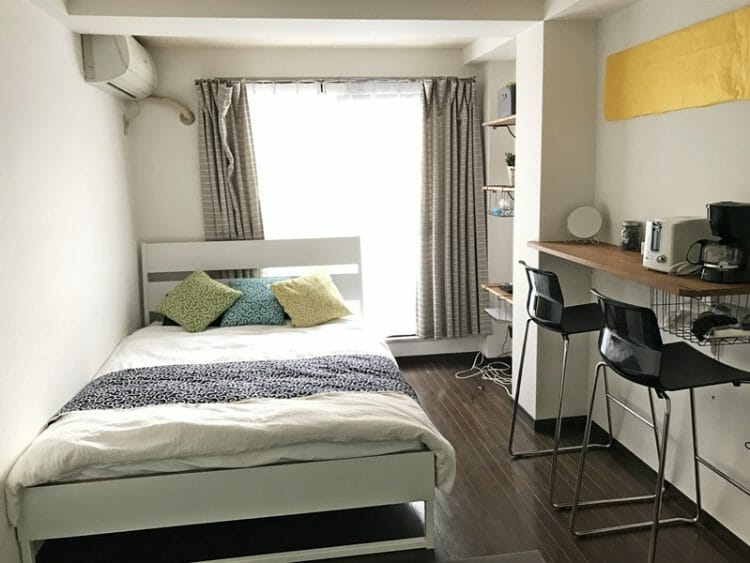
Your best bet for places to stay in Osaka is along the JR Osaka Loop line that services central Osaka. From here, there are easy connections to Kansai International Airport, Kyoto, or Nara. We stayed at a small Airbnb apartment just minutes away from Tsuruhashi JR station along the Osaka Loop line. However, Japan has since cracked down on Airbnb, so your best bet is to also check Booking.com for highly rated hotels in Osaka.
Here are some highly-rated hotels in Osaka, or you can also click here to explore more options in Osaka!
HOTEL THE LEBEN OSAKA: This modern boutique hotel is highly rated by past guests for its location – it is within walking distance from the Dotonbori area. There are also laundry facilities available if you are staying for a longer time in Japan. Click here to check rates and availability at HOTEL THE LEBEN OSAKA.
Zentis Osaka: This beautiful boutique hotel offers spacious, modern rooms close to Osaka station. Past guests say that the rooms are very comfortable, and liked the bar lounge. However others also noted that the breakfast spread is underwhelming. Click here to check rates and availability at Zentis Osaka.
MIMARU Osaka Shinsaibashi North: Perfect for families or groups of friends traveling together, this branch of MIMARU offers 1-bedroom and 2-bedroom apartment options with small kitchens. There is even a ninja-themed room! Click here to check rates and availability at MIMARU Osaka.
Where to stay in Kyoto
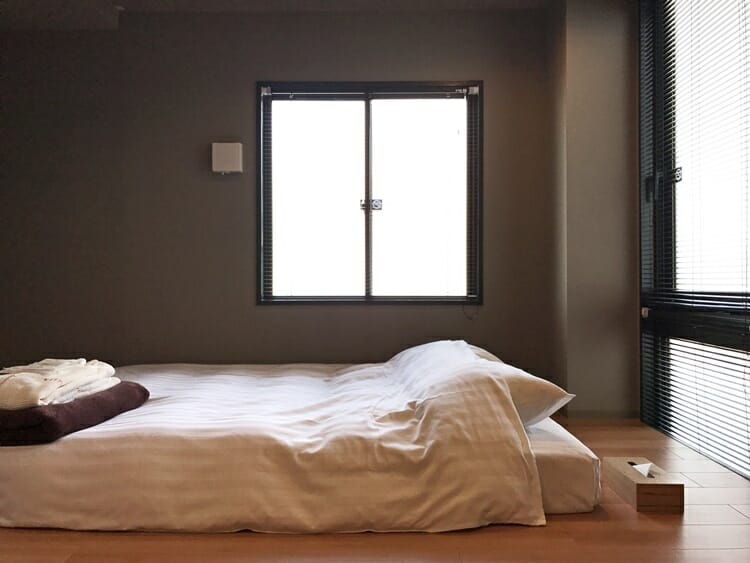
If you are planning a day trip from Kyoto to Nara then I recommend staying in the Shimogyo Ward, relatively close to Kyoto Station. From there, it was an easy 10 minute stroll to downtown Kyoto, the Kamo river, the Gion District and Nishiki Market. It was also between 2 subway stops and multiple bus terminals.
Kaede Guesthouse is a clean and cozy place to stay and offers a range of different accommodation options from private double rooms with ensuite bathrooms to dormitory rooms. The decor is very simple, with plenty of clean lines and wooden features. Click here to check current rates at Kaede Guesthouse or click here for other highly rated hotels in Kyoto!
Things to see in Nara in 1 day
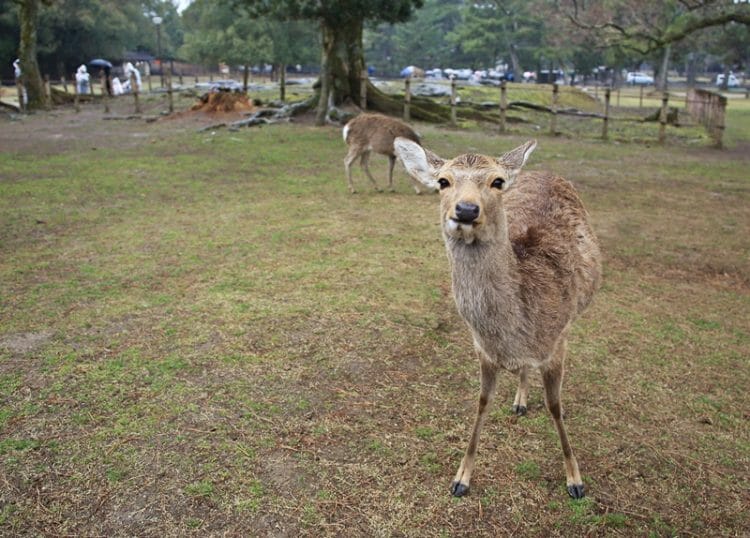
Nara can easily be explored on foot if you are planning a day trip from Kyoto or Osaka. The wild deer are there all year round, but the so-called best time of year to visit Nara depends on what you’re looking for.

You can spot cherry blossoms in spring from March to May (the sakura season is fleeting and changes each year), the summer months from June to August offer lush, green mountaintops, the autumn months from September to November offer vibrant fall foliage and winter is typically much quieter if you want to get away from the crowds. Regardless of when you visit Nara, here are some of the best places to visit in Nara if you only have 1 day to explore!
1. Nara Park
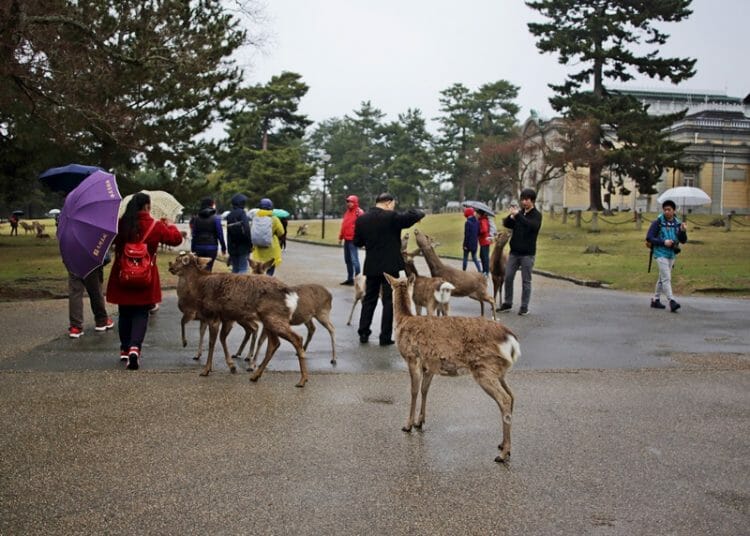
Nara Deer Park is one of the top attractions in Nara and a breezy 10-20 minute stroll away from the Kintetsu-Nara and JR Nara train stations. Hundreds of deer roam freely around, sleeping, hanging out, gossiping and waiting for tourists to feed them. There are street venders all around the park selling “deer crackers” – 150 Yen for 10 crackers, so that you can approach the deer and give them a snack.
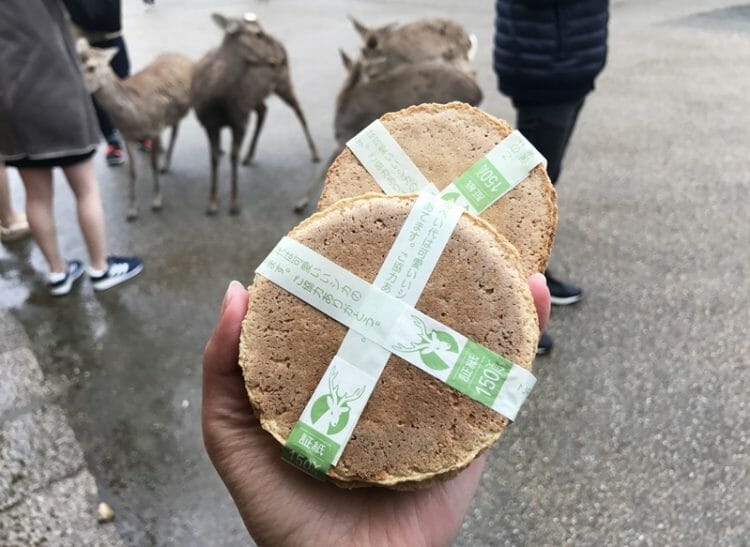
The deer in Nara are all very used to being fed, and will bow their heads when you hold food out in your hand – once they’ve bowed, they expect their treat so don’t hide or withdraw the food! It’s not uncommon for deer to chase people around for food or even nudge semi-enthusiastically/aggressively, so be prepared for a feeding frenzy.
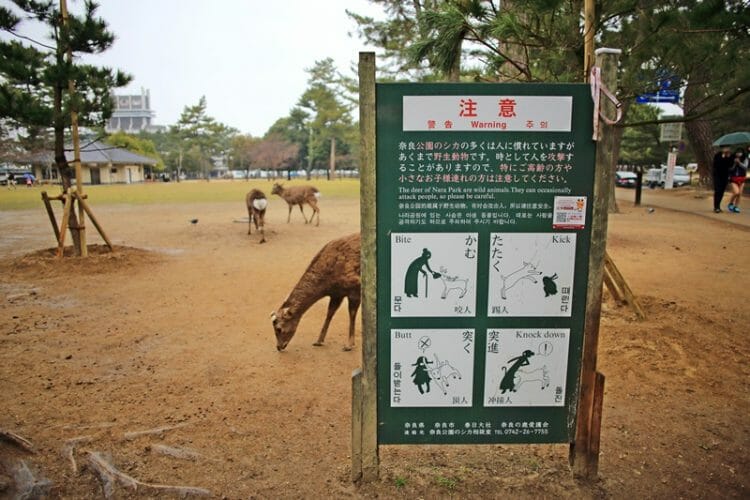
Just as you would with any wild animal, don’t pester them, make loud noises, use your camera flash or try to put your arms around the deer. Or better yet, stand next to them awkwardly like a deer in headlights (told you I’d get that deer pun in).
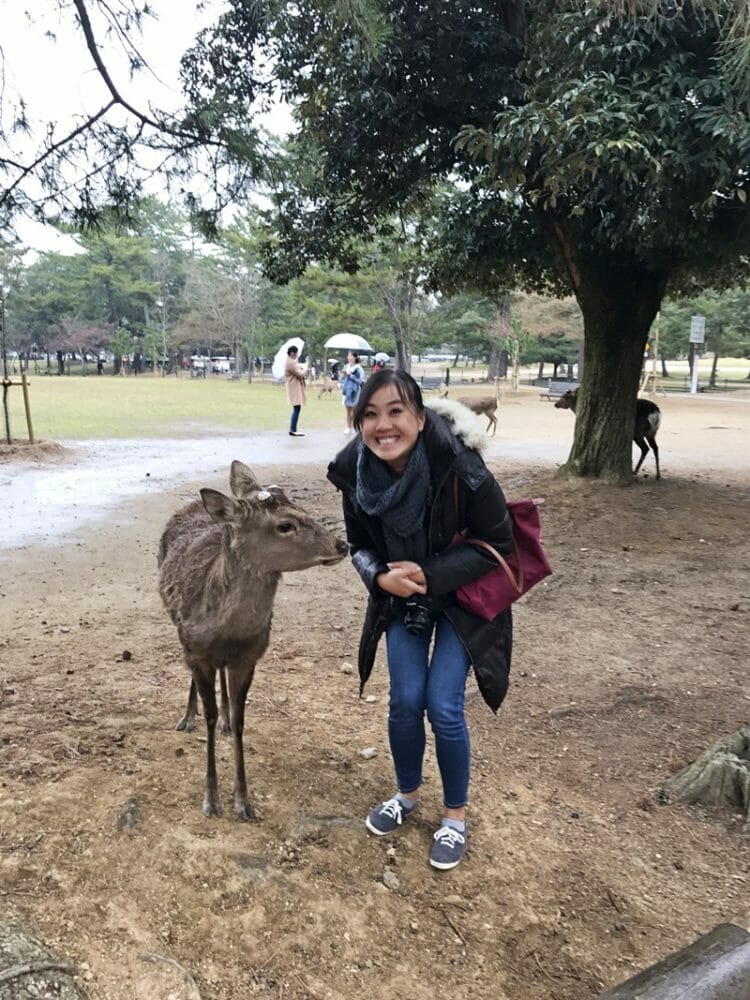
Though the deer are considered sacred, unfortunately the population is on the up and up and the government has approved a culling of deer living outside of the park.
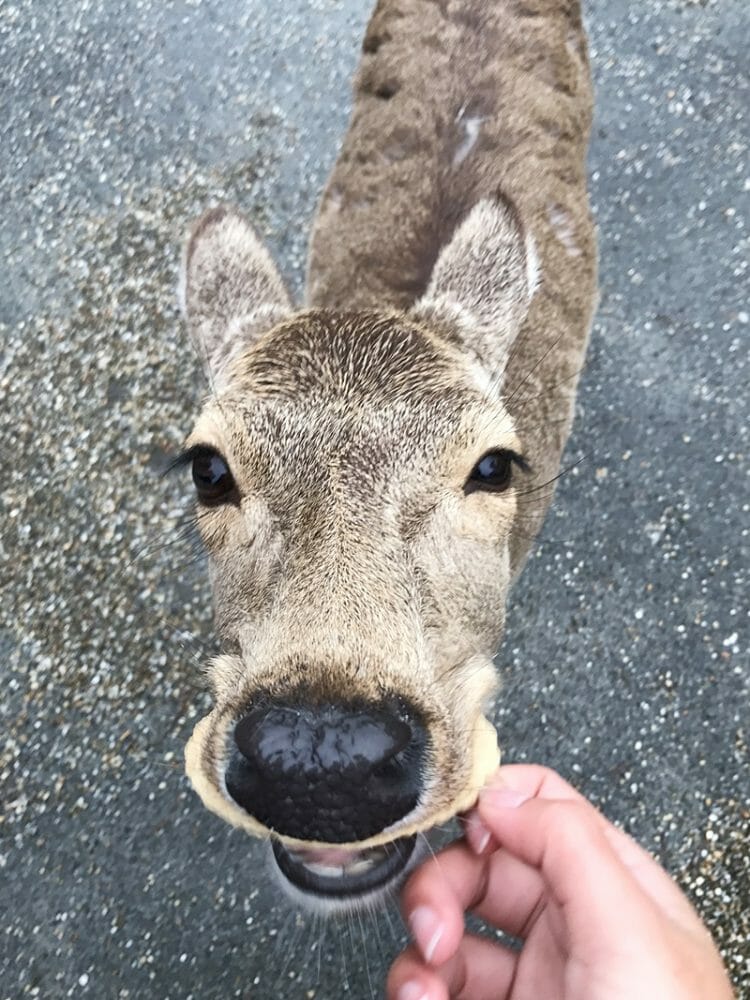
The long-term effects of tourism on the deer population and behaviour are unclear, so it’s worth bearing that in mind when you travel to Nara.
2. Kofuku-ji Temple
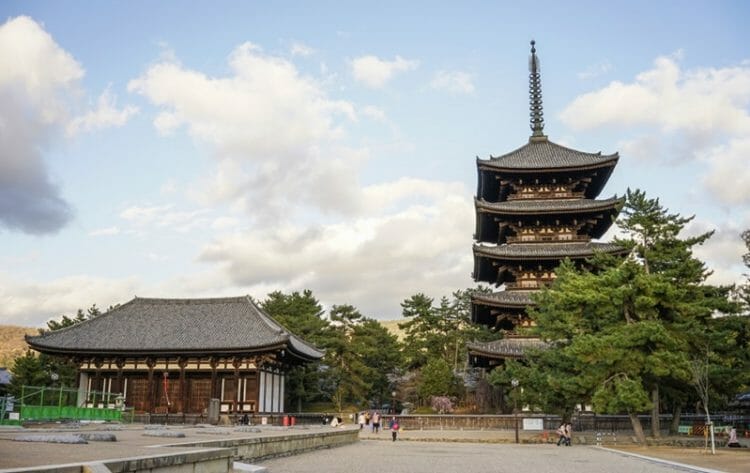
Kofuku-ji is a Buddhist temple on the outskirts of Nara Park.
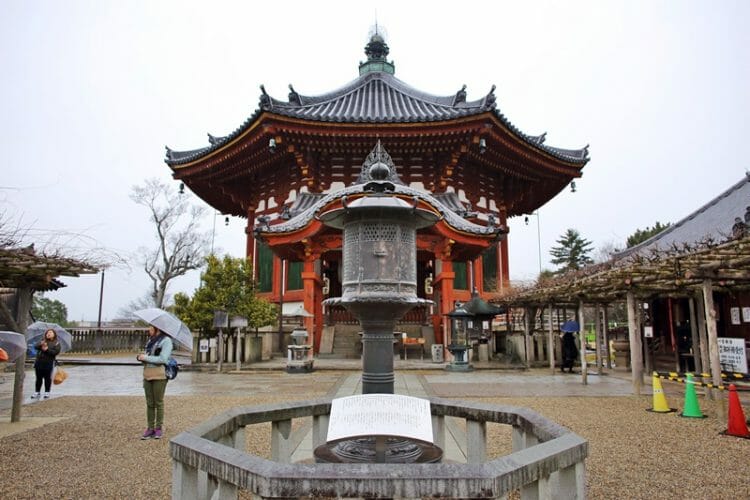
It’s worth a quick visit for a wander around the grounds (free entry), or entry will cost 600 Yen if you want to check out the Eastern Golden Hall and Kofuku-ji National Treasure Hall.
3. Himuro Shrine
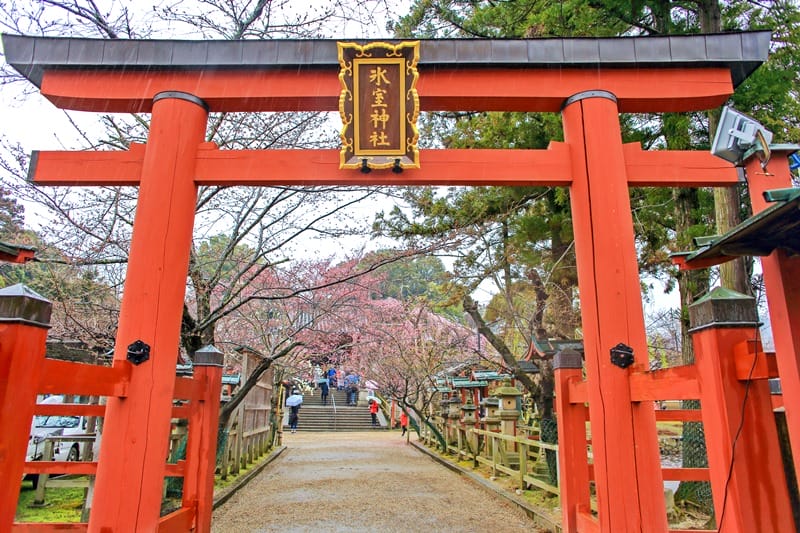
Himuro Shrine is a small 8th century shrine just steps away from Kofuku-ji Temple. Though it’s small, it has several cherry blossom trees and is a popular photography spot during sakura season. It is also perfectly framed by a bright orange torii gate at its entrance. Don’t leave it off your Nara itinerary!
4. Nandai-mon Gate and Todai-ji Museum
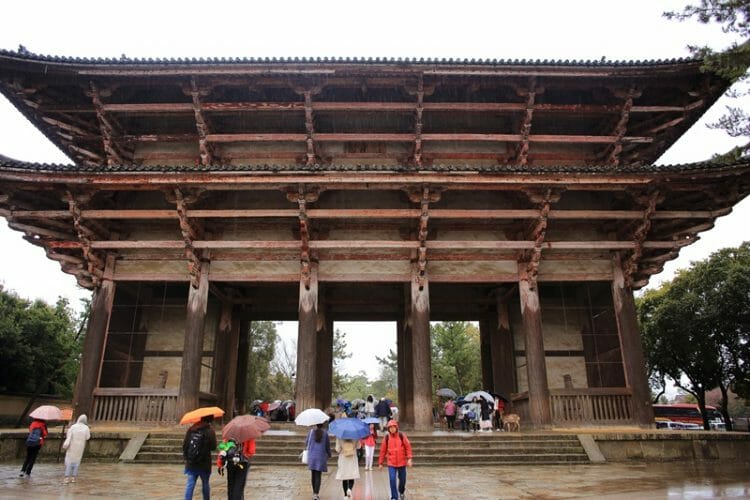
The “Great South Gate” is the main gate leading to Todai-ji, and is held up by 18 giant wooden pillars, forming one of the largest temple entrance gates in Japan.
As you walk through the gate, the Todai-ji Museum will be on your left. If you need a tea and toilet break, this is where you should stop, before taking a quick tour around the museum itself for rotating exhibitions of treasures from the temple, including Buddhist statues and religious art. The combined ticket for Todai-ji Museum and Todai-ji Temple costs 800 Yen.
5. Todai-ji Temple
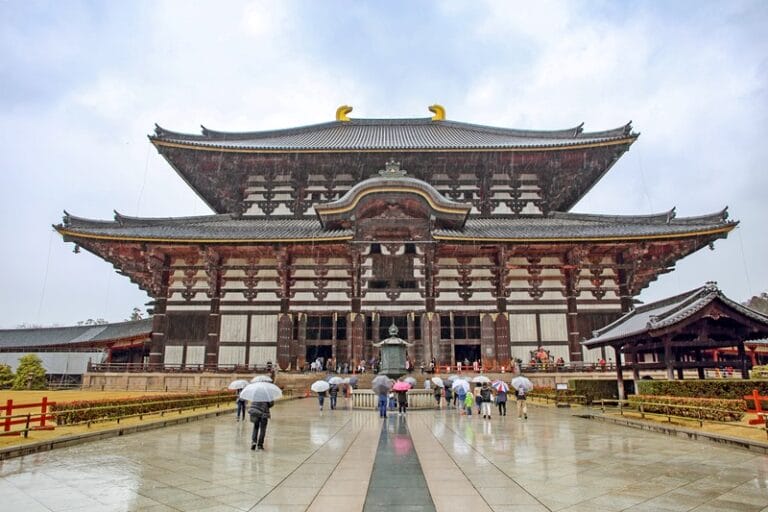
Todai-ji is Nara’s most popular attraction and a UNESCO World Heritage Site. The 8th century temple has been rebuilt after being destroyed by fire twice, and now houses a massive bronze seated Buddha statue weighing 500 tonnes.
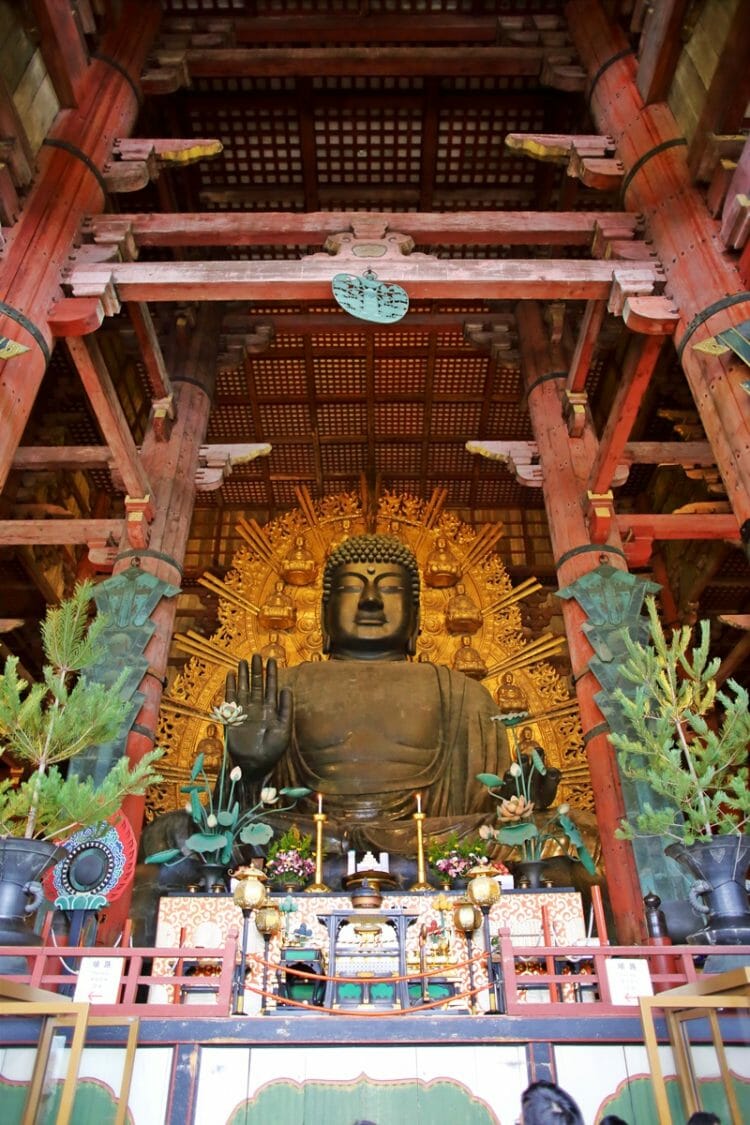
Don’t skip the statue of Komoku-ten, the Guardian King of the South, miniature replicas of the temple itself, and wooden beam with a hole in it. People crawl through the hole because it is thought to be the equivalent to the size of the Buddha statue’s nostril, and will bring you good fortune.

On the way out of the temple, you’ll find the small Kagamiike mirror lake and Todai-ji bell. Exploring Todai-ji is one of the best things to do in Nara.
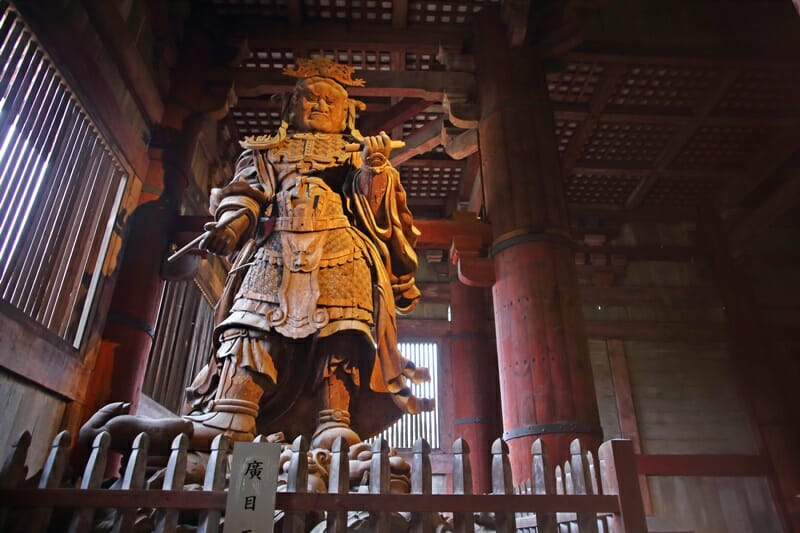
Those are some of the main sights to visit within a day in Nara. As it was extremely rainy while we were there, we chose to head back to Osaka instead of venturing onwards; if you’re ambitious and want to see more of Nara, check out Tamukeyama Hachiman-gu Shrine, Mizuya Shrine, or hike 15-30 minutes up to Mount Wakakusa, a viewpoint over the city of Nara where you will also find cherry blossom trees (during spring), wide open plains and wild deer. Mount Wakakusa is closed between December and March.
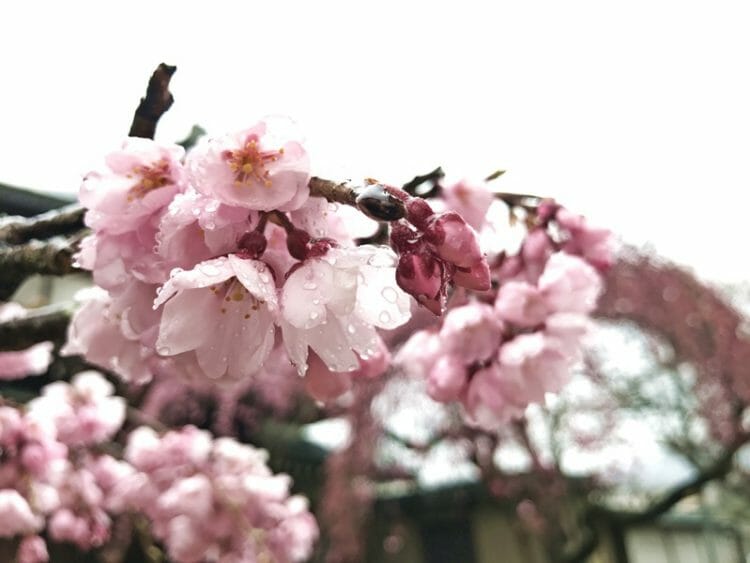
Hotel recommendations: In Osaka, choose a hotel close to one of the JR Osaka Loop line stations for maximum convenience. Look into staying at HOTEL THE LEBEN OSAKA (modern boutique hotel within walking distance from the Dotonbori area), Zentis Osaka (beautiful boutique hotel with spacious, modern rooms close to Osaka station) or MIMARU Osaka Shinsaibashi North (perfect for families or groups of friends traveling together with 1-bedroom and 2-bedroom apartment options with small kitchens). You can also click here to see current rates at other highly-rated hotels in Osaka!
In Kyoto, stay in the Shimogyo Ward near Kyoto Tower. Click here to check current rates at highly rated accommodation in Shimogyo Ward or click here for other highly rated hotels in Kyoto!
Visiting Japan? You might also enjoy these guides:
- Heading to Osaka? Read my quick guide to spending 1 day in Osaka
- And don’t miss my guide to the best things to do in Kyoto
- Need more travel inspiration? Here are 30 stunning travel photos of Kyoto
A Nara day trip from Osaka or Kyoto is one of the best things to do in Japan. Do you have plans to visit Japan and will Nara be on your itinerary? Let me know if you’ve heard about this beautiful city and its furry inhabitants in the comments section below!
Pin this for later!
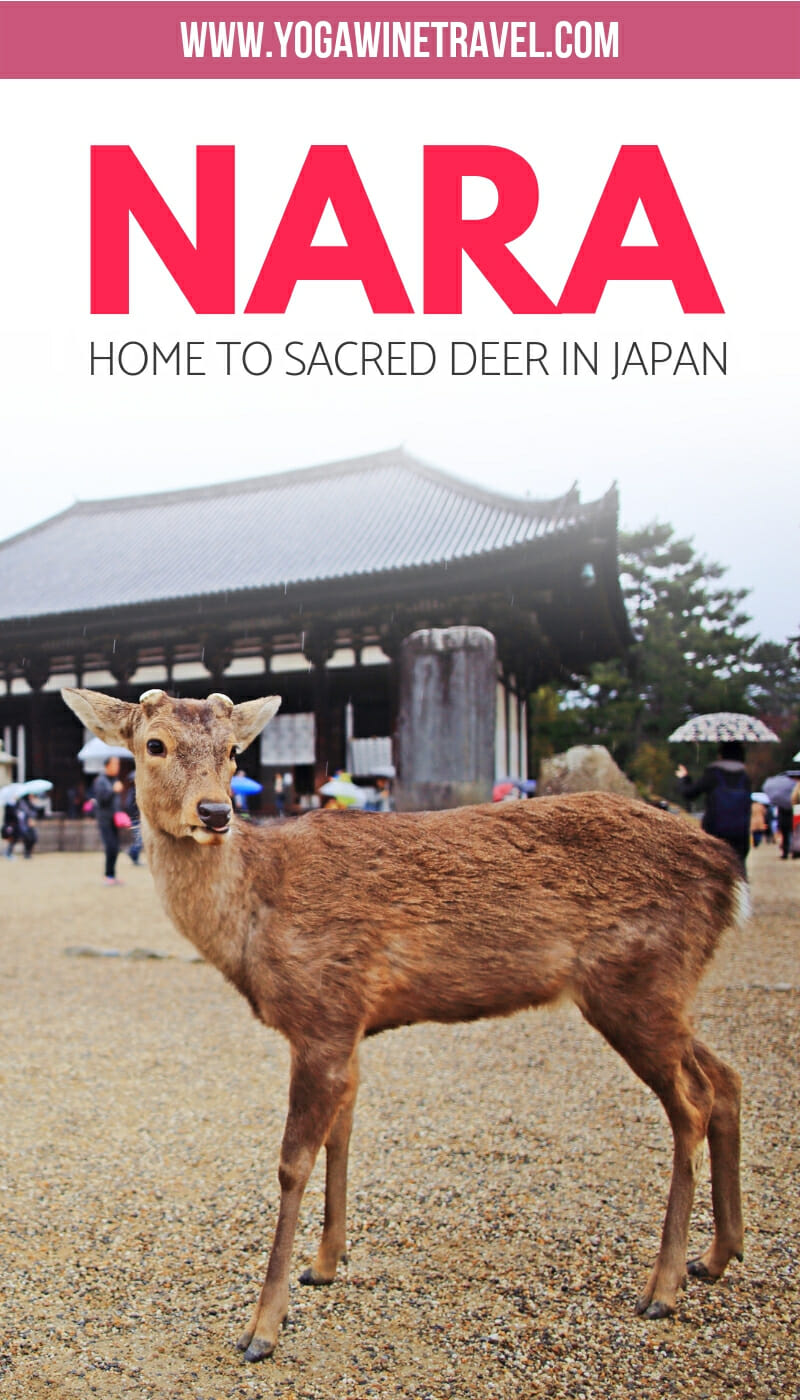
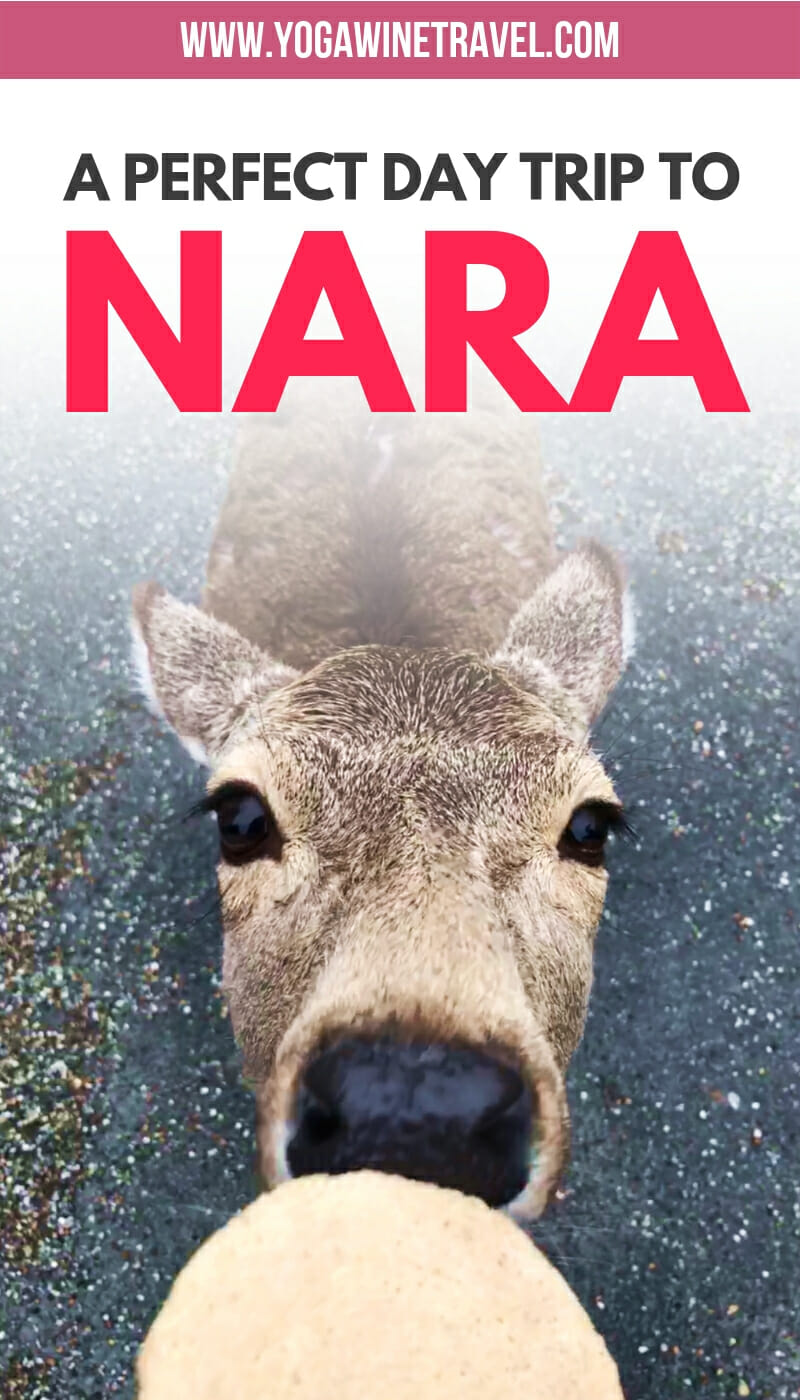
This post contains affiliate links. If you choose to book your stay using these links, I will earn a small commission at no extra cost to you. Thank you for supporting my website by using these links.
Enjoyed reading this article? Subscribe to the mailing list!
* Unsubscribe at any time. Your e-mail address will only ever be used to send the occasional Yoga, Wine & Travel newsletter.



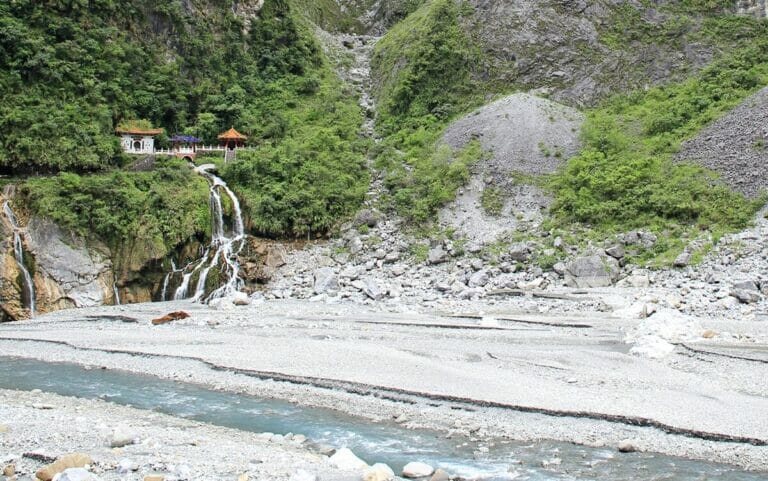



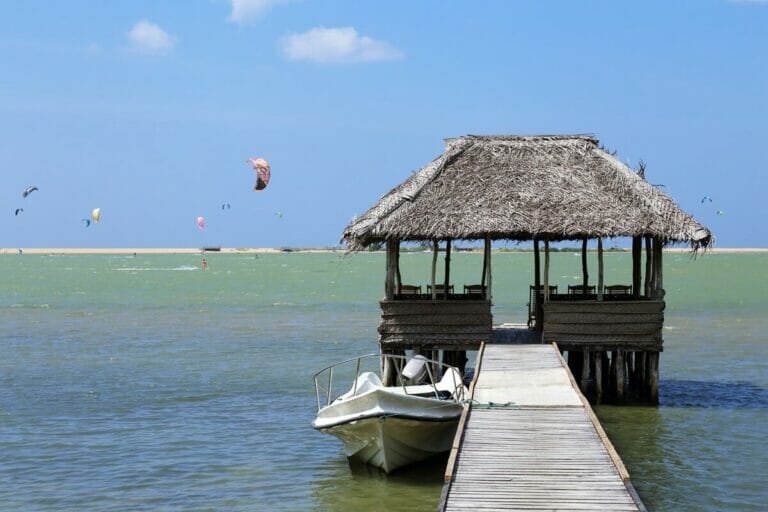

I absolutely LOVE Asian temples. I spent some time in China and visited a Buddhist monastery and it was one of the coolest things I have ever done.
The temple styles vary across Asian culture too! The ones in Southeast Asia are stunning and often gilded. Just stunning!